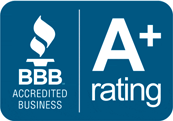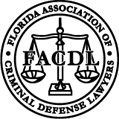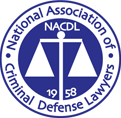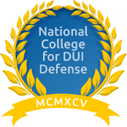- DUI
- Criminal Defense
- Florida DUI
- Traffic Offenses
- Drug Charges
- Marijuana Charges
- Violent Crimes
- Domestic Violence
- Temporary Injunctions
- Weapons Charges
- Theft Crimes
- White Collar Crime
- Juvenile Offenses
- Sex Crimes
- Violation of Probation
- Early Termination of Probation
- Seal or Expunge Criminal Record
- Criminal Appeals
- US Federal Offenses
- Misdemeanor Charges
- Felony Charges
- Co-Defendant Cases
- College Student Defense
- College Student Hearings
- FSU Students
- FAMU Students
- Florida Panhandle Arrests
- Extradition to Florida
- Bench Warrants / Warrants
- Emergency Bond Hearings
- Gambling Charges
- Drone Arrests
- Marsy’s Law
- UAS Infractions
- Introduction of Contraband
- Lying to Police
- Locations
- Case Results
- Our Firm
- Media
- Resources
- Blog
- Contact Us
Software for Finding Child Pornography Questioned for Accuracy
February 1, 2023 Don Pumphrey, Jr. Criminal Defense, Sex Crimes Social Share
With new advancements in technology, there are various tools and software available to track laptops, tablets, phones, and other digital devices for traces of viewing or sharing child pornography on the internet.
This article will explain how software searching for child sexual abuse material (CSAM) works, examples of types of software, and the ongoing issues defense attorneys are having with child pornography cases using these types of software.
How does the Software Work?
When law enforcement officers believe a person has CSAM in their possession, there are a variety of tools and software which can be used to detect it. Investigators use these software programs to search peer-to-peer networks for any trace of child porn.
Peer-to-peer networks are a decentralized connection of computers over the internet in which users can directly share files with one another. Once the authorities have found traces of CSAM detected through the software, they have a probable charge to obtain a warrant for the alleged offender’s digital devices. Upon further investigation, this can likely lead to criminal charges for child pornography or other related charges.
Example Software Used in Criminal Cases
There are several examples of such software for authorities to trace potential possession of child pornography across the internet. Police will use modified peer-to-peer programs to flag down any IP addresses which are suspected to obtain child pornography.
One of the software tools is the Florida-based Child Rescue Coalition (CRC). According to their site, CRC is a nonprofit organization focusing on rescuing children from sexual abuse. CRC has a technology built to assist police officers and digital forensic experts to track, arrest, and prosecute child predators.
The software has claimed to be used in each state in the U.S., along with 90 countries around the world. Using their data, CRC has stated that they’ve helped track over 54 million offenders. When questioned about its software, CRC told Human Rights Watch, “as a policy, we do not publicly share details of how we identify sex offenders online, as we do not want predators to learn better ways to hide their illegal activity.”
Another software tool implemented for searching for CSAM is called Torrential Downpour. The detection tool was created over a decade ago by the University of Massachusetts. One of its creators, computer science professor Brian Levine, explained that the software is used to find accurate probable cause for police to obtain a search warrant. However, the software can only serve as a tool if the police and courts do their job.
“The software is one part of an entire process,” Levine said, “followed by investigators and courts to produce reliable evidence and to follow a fair judicial process.”
Issues with the Software
Software used to track illicit images and videos to a person’s digital device is starting to backfire. ProPublica has found over a dozen child pornography cases from 2011 to 2019 that ended up dismissed due to either challenges from the various software tools, or from the lack of the government’s compliance to share the program’s process with defense attorneys.
Tami Loehrs of Loehrs Forensic claimed that she was made aware of over 60 cases in which the defense strategy was focused on the software searching for traces of child pornography. One of the biggest complaints comes from the claim of secrecy from the government regarding the software—and how a defendant may be unable to prove they were wrongly accused by the software due to a lack of knowledge regarding its process.
In certain cases, the software has traced images considered to be child pornography to a person’s Internet Protocol (IP) address, but later are unable to be found on the accused person’s device. Other cases showed examples of the CSAM being discovered in areas of the computer that were not supposed to be entered—implying the police conducting too broad of a search.
The main problem is that both the software creators and the government choose to keep the software’s secrecy.
The following is a statement from former Justice Department lawyer Orin Kerr:
“When protecting the defendant’s right to a fair trial requires the government to disclose its confidential techniques, prosecutors face a choice: Give up the prosecution or give up the secret. Each option has a cost. If prosecutors give up the prosecution, it may very well mean that a guilty person goes free. If prosecutors give up the secret, it may hurt their ability to catch other criminals. Prosecutors have to choose which of those outcomes is less bad in each particular case.”
In February 2019, a federal judge allowed a defense expert to examine one software after identifying child pornography on a device which was never found on the suspect’s computer. Human Rights Watch, a nonprofit, requested that the Justice Department to review the software Child Protection System, asking if it had previously been tested independently.
“The sharing of child-sex-abuse images is a serious crime, and law enforcement should be investigating it,” said Human Rights Watch researcher Sarah St. Vincent. “But the government needs to understand how the tools work, if they could violate the law and if they are accurate.”
However, prosecutors remain reluctant to disclose any information regarding the process of these types of software. Law enforcement officials have often claimed that they have been prohibited from disclosing any information, as per their contracts.
“While the Department of Justice supports full compliance with all discovery obligations imposed by law,” wrote lawyers from the Justice Department and FBI, “those obligations generally do not require disclosure of sensitive information regarding law enforcement techniques which, if exposed, would threaten the viability of future investigations.”
Example Case
One example of one of the software tools being used in a child pornography case was the case of Tom Tolworthy. The software engineer from Mesa, Arizona was accused of possessing multiple incriminating files, including an image of a 4 year-old with her legs open.
Deputy Randall Snyder of Pinal County Sheriff’s Office testified that there were five examples of the defendant’s IP address which was used for investigative and charging purposes. However, Tolworthy pleaded not guilty to the charges against him.
When the defense asked if the files were on the defendant’s computer or “were just observed being downloaded,” Snyder responded that the images referenced were part of a torrent file—which is a digital index that asks to download specific movies or images. However, Snyder responded, “We have not concluded a thorough enough investigation of the computers through our forensic yet to find those particular files.”
Despite being unable to determine whether the files Tolworthy was being accused of possessing by the software were actually on his computer, the State assured the jury that the investigation was continuing and he was indicted.
The defense expert in Tolworthy’s case had doubts regarding whether or not the files existed. “I was unable to locate the torrent, the info hash or the files of child pornography identified during the undercover investigation,” said Loehrs. “In addition, the torrent, the info hash and the files of child pornography were not found by the State’s forensic examiner, either.”
An “info hash” is a fingerprint used to identify computer files. Police use the info hashes to detect illegal files which may have been renamed to avoid detection by software. The hash is matched by investigators to a database of known child porn. The info hash can be an important detail for the defense as well, in cases in which the computer has mistakenly been broadcasted the hash of a downloaded file—which could have been the hash of a movie or video searched by the computer user.
Tolworthy had been indicted in State court on 10 counts of committing a “dangerous crime against children,” which carries sentences of 10 years for each charge if convicted. After Tolworthy’s defense argued the software used in finding the illicit images was unconstitutional, the case was tossed.
How Working with an Experienced Defense Attorney can Help
When police believe a person has child pornography in their possession, they often rely on software tools to search their digital devices. While these types of software are heavily relied on to retrieve possible evidence of CSAM, it is clear that the returning information is not always reliable. Where does that leave someone who believes they have falsely been accused of a child pornography offense?
The best way to determine how to fight a child pornography possession charge is to work with a Tallahassee child pornography defense attorney. An experienced attorney will work alongside a computer forensic expert—much like those at Loehrs Forensics—to search the accused person’s digital devices just as the investigators will surely do. By working with a computer forensic expert, a person accused of a crime has the possibility of proving that they did not intentionally download or view examples of CSAM.
Convictions for child pornography possession or distribution have life-altering consequences. You could be facing expensive fines, exceedingly long prison sentences, or both. In addition, any person convicted of a sex crime in Florida will have to register under Florida’s Sex Offender Registry for life. This can lead to other implications such as difficulty finding a job, a place to live, or the ability to maintain relationships with friends and family.
If you or someone you love has been accused of a crime in Florida, it is imperative that you reach out to a defense attorney in your area. Don Pumphrey and his team of attorneys have years of experience working with Florida citizens accused of various criminal offenses. Contact Pumphrey Law Firm today at (850) 681-7777 or leave an online message to receive an online message regarding your case.










